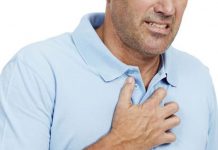The incidence of stroke among the population is continually rising; more people than ever before may now be getting stroke and what is worrying is that stroke is becoming increasingly more common among the younger demographic.
According to a study that was presented at the International Stroke Conference in San Antonia recently, stroke, which is basically an attack on the brain, is striking more people between 20 and 45.
When a stroke occurs, oxygen and blood supply to the brain are cut off and as many as two million brain cells could die every second at the time of a stroke. This massive cell death can cause disability, lead to permanent brain damage, or even death.
It is important to recognize the signs and symptoms of a person suffering a stroke so that swift recourse can be obtained. Quick action could mean the difference between permanent disability and full recovery.
Stroke symptoms may include sudden trouble talking and sleeping, a numbness or loss of sensation in the face, headaches with no cause, difficulty seeing properly, etc. Here is what to do and look for if you suspect stroke:
- If one side of the face droops when the person smiles (F for face)
- If, when both arms are elevated, one is seen to be drooping (A for Arm)
- Slurred speech (S for speech)
- Time to get help by dialing 911, your doctor, or the closest hospital or stroke center (T for Time)
Source: medill













